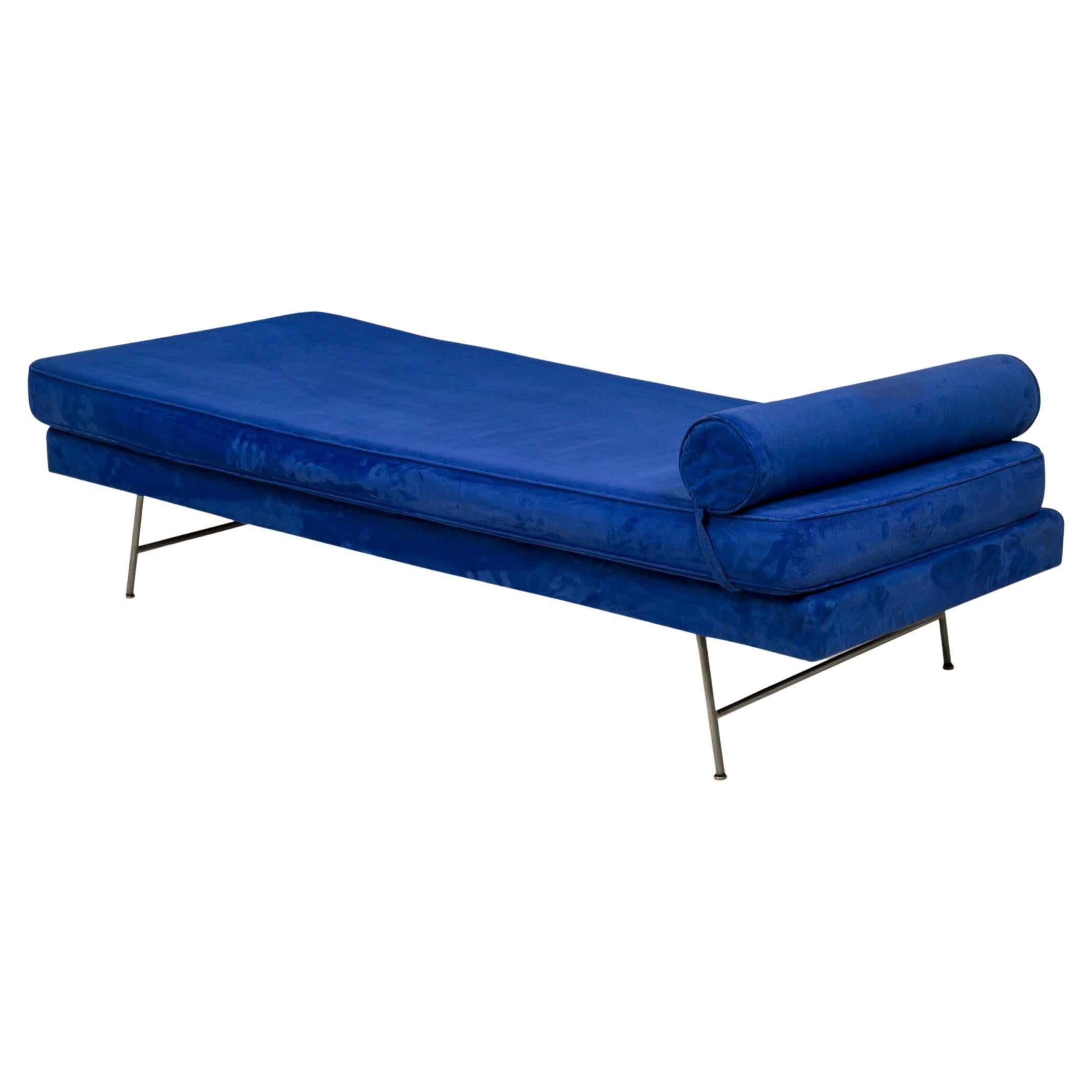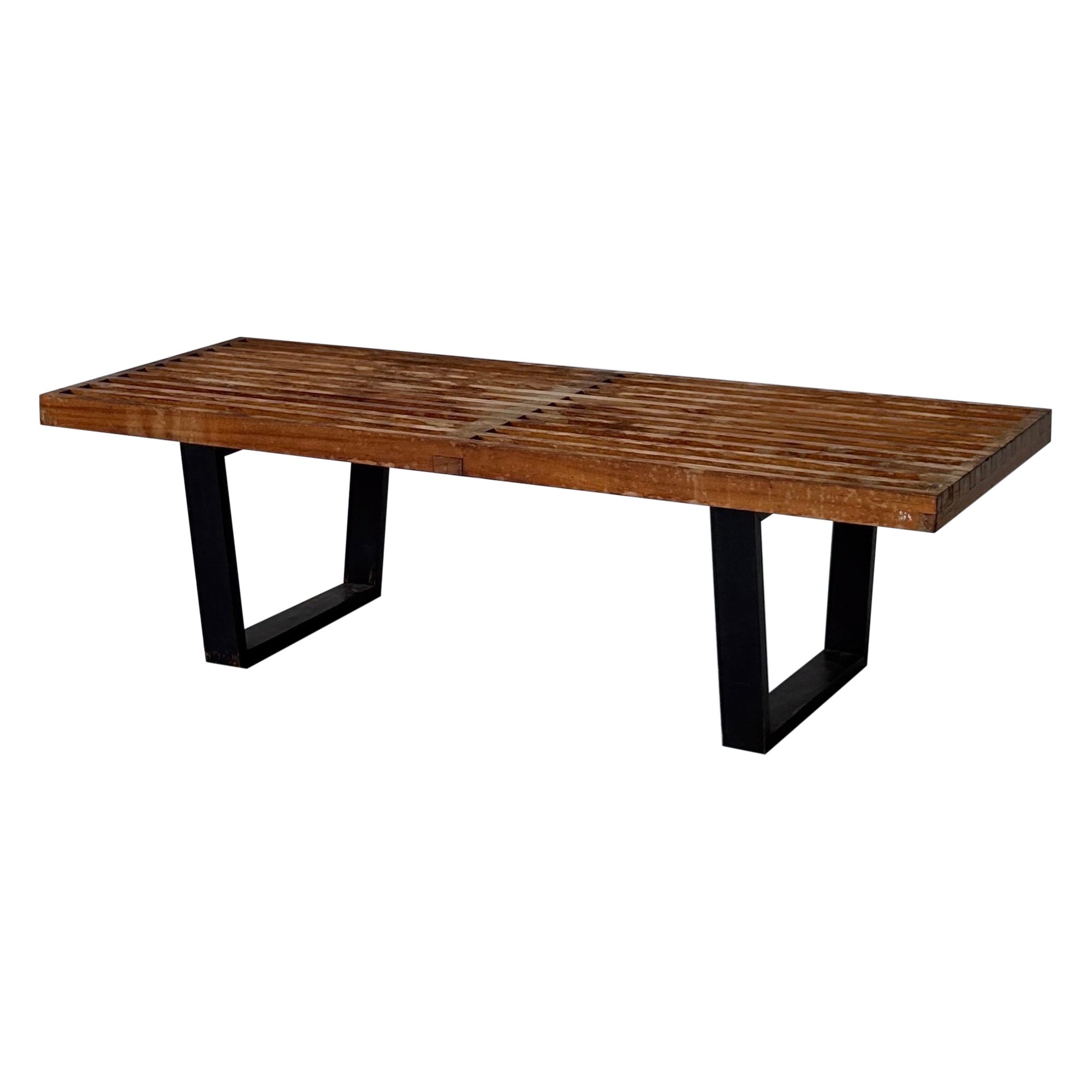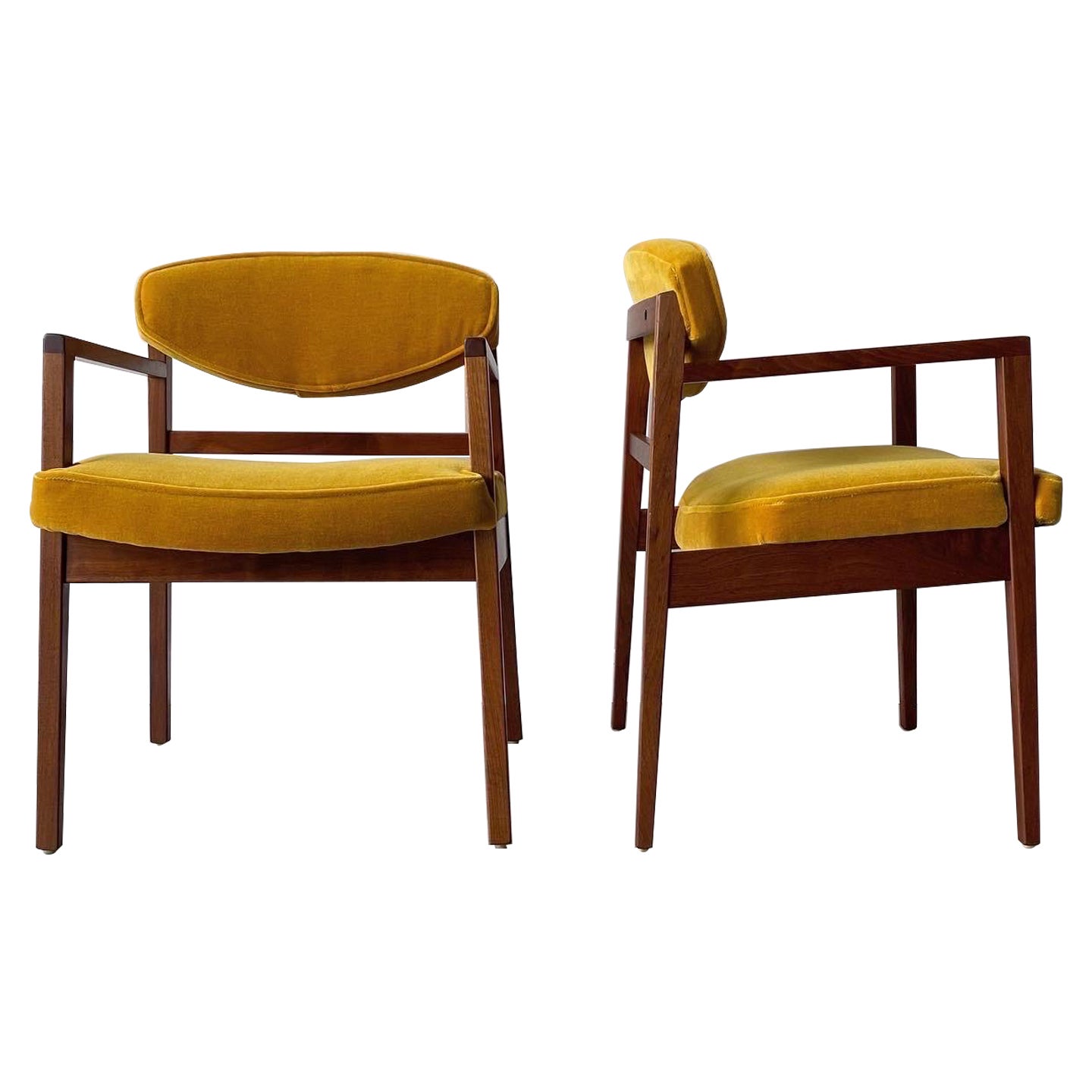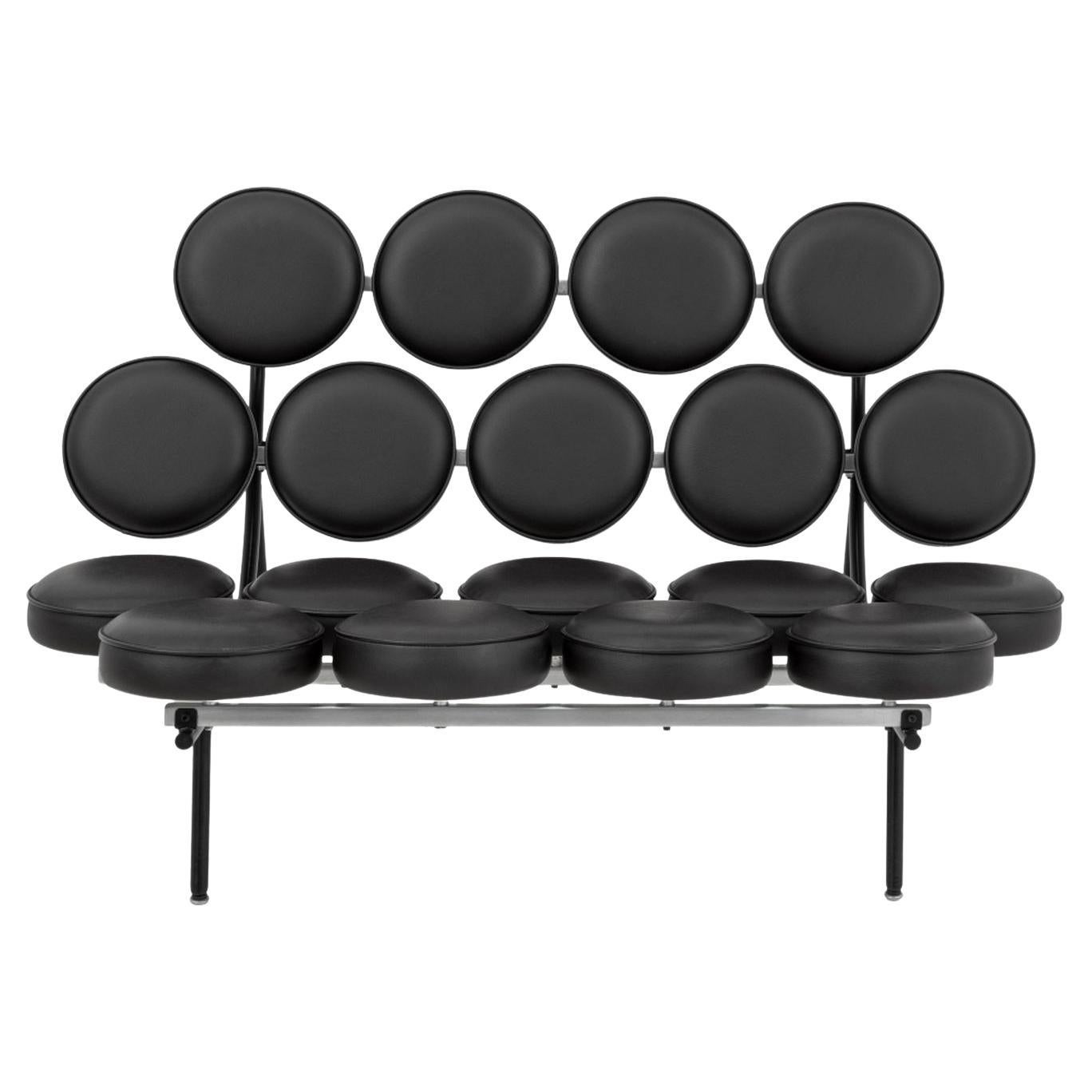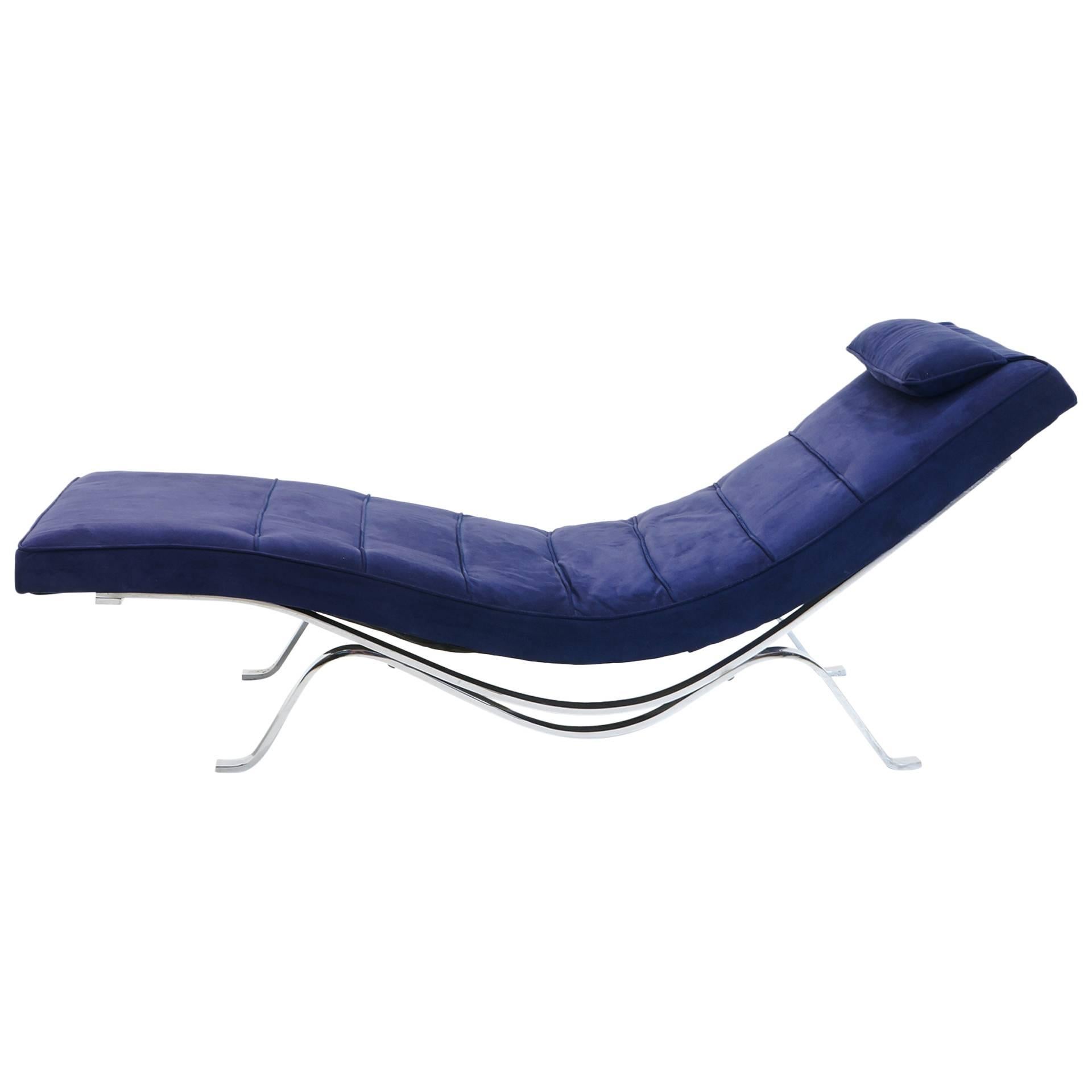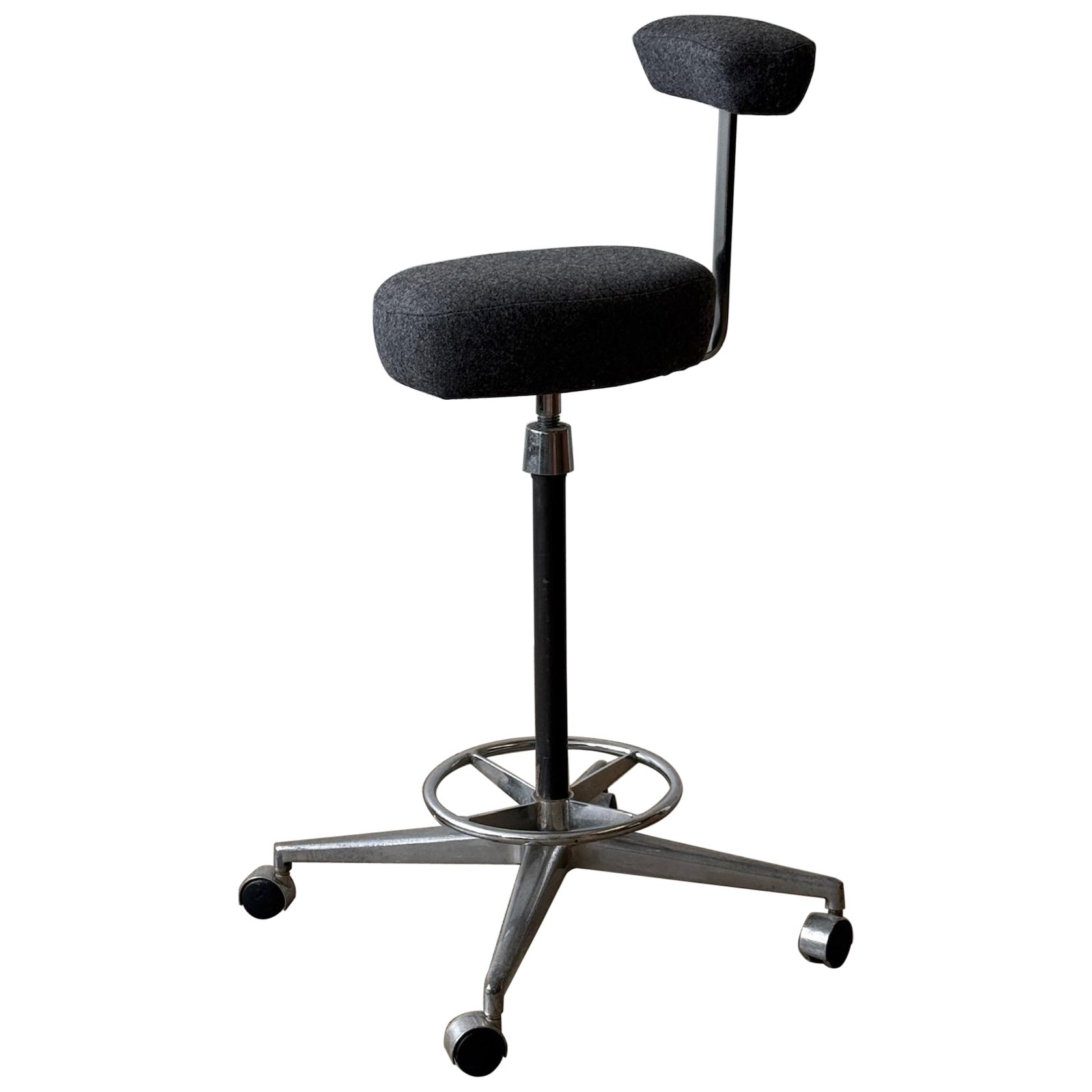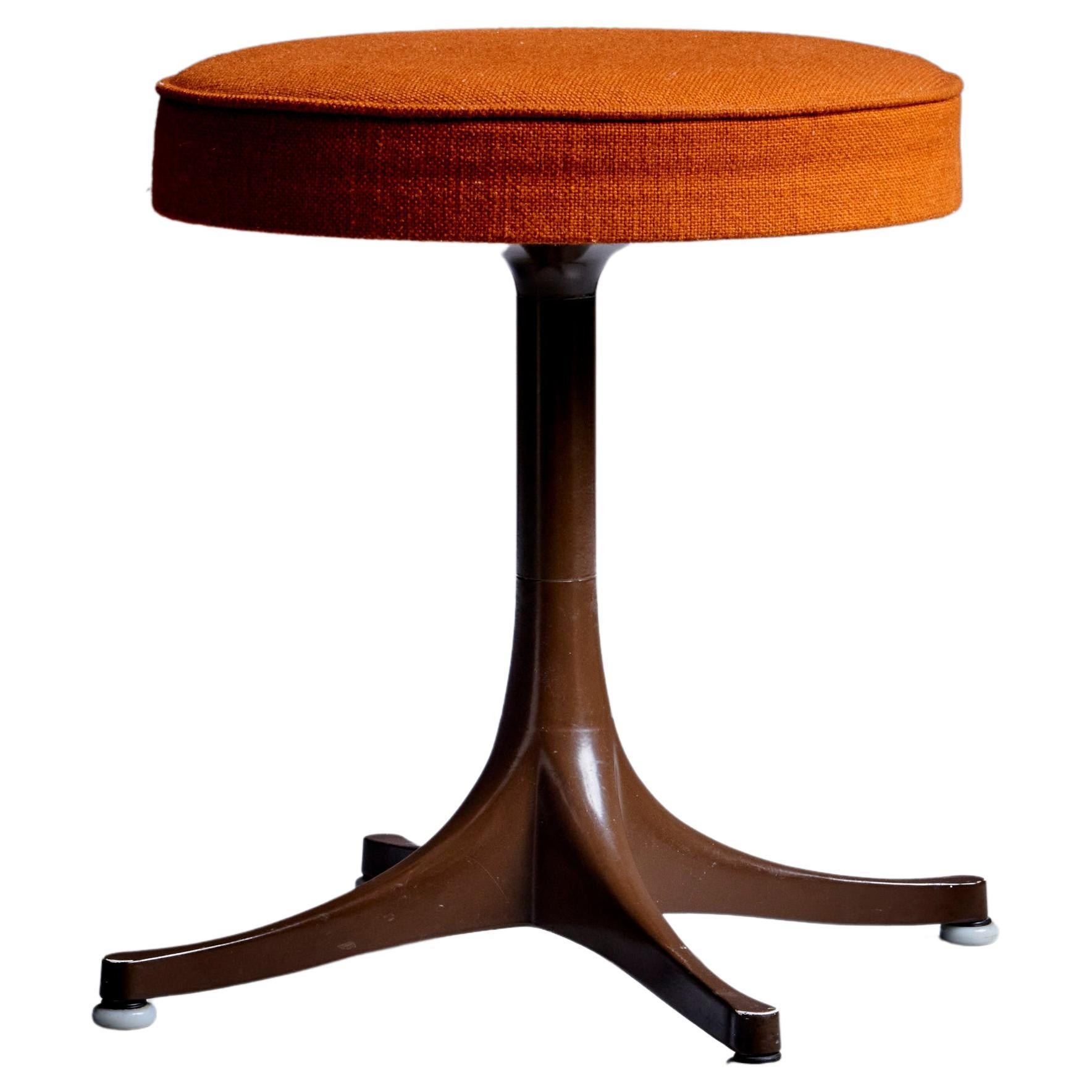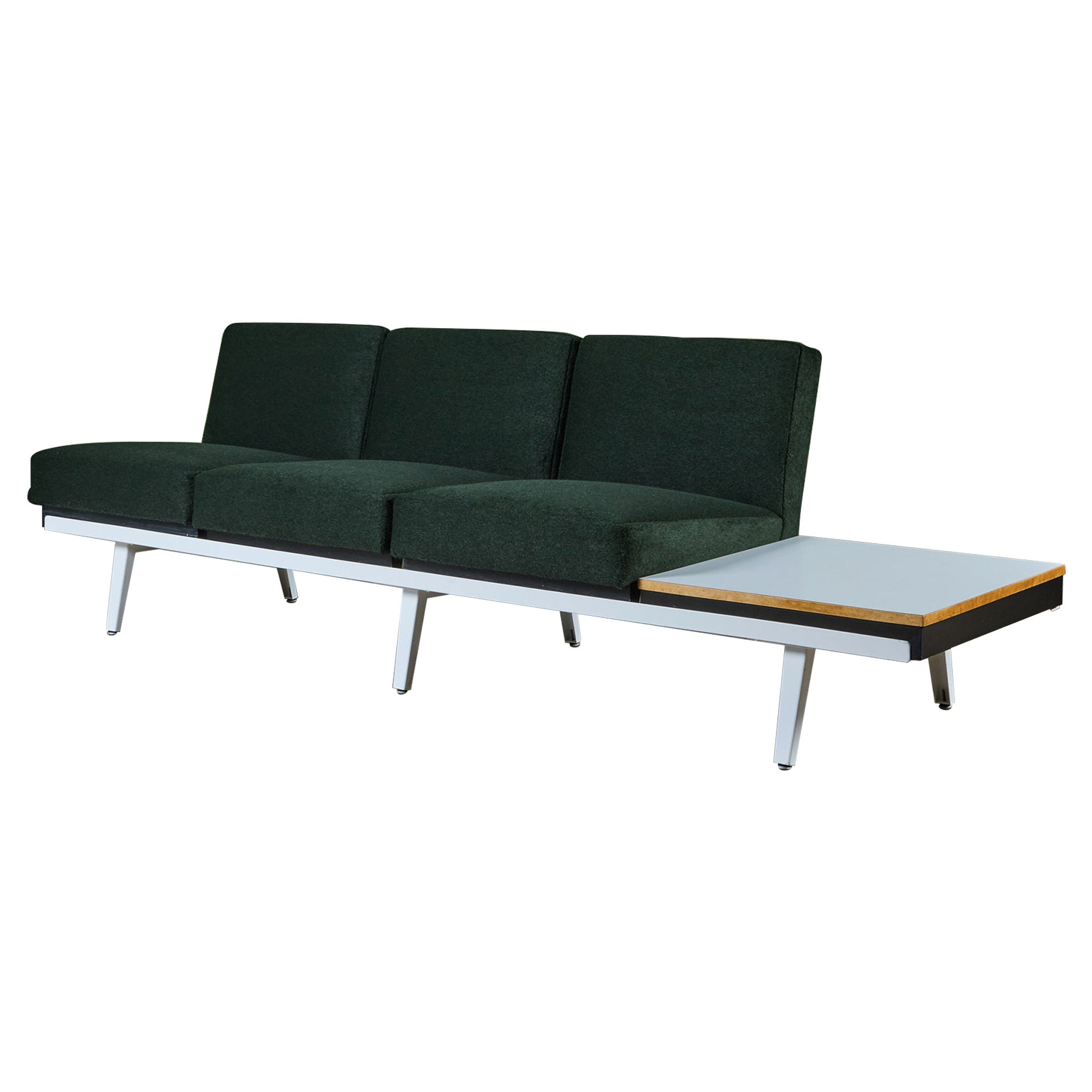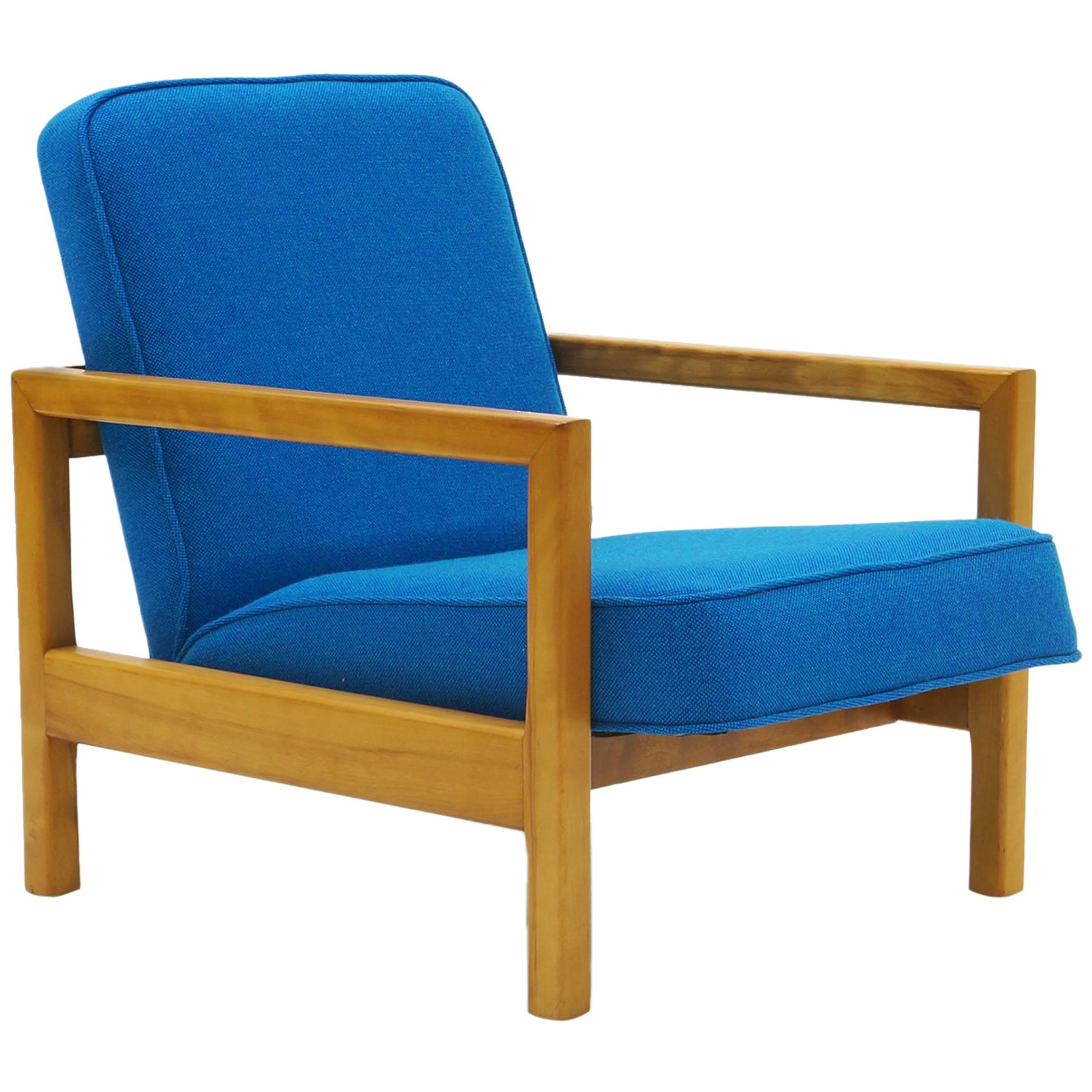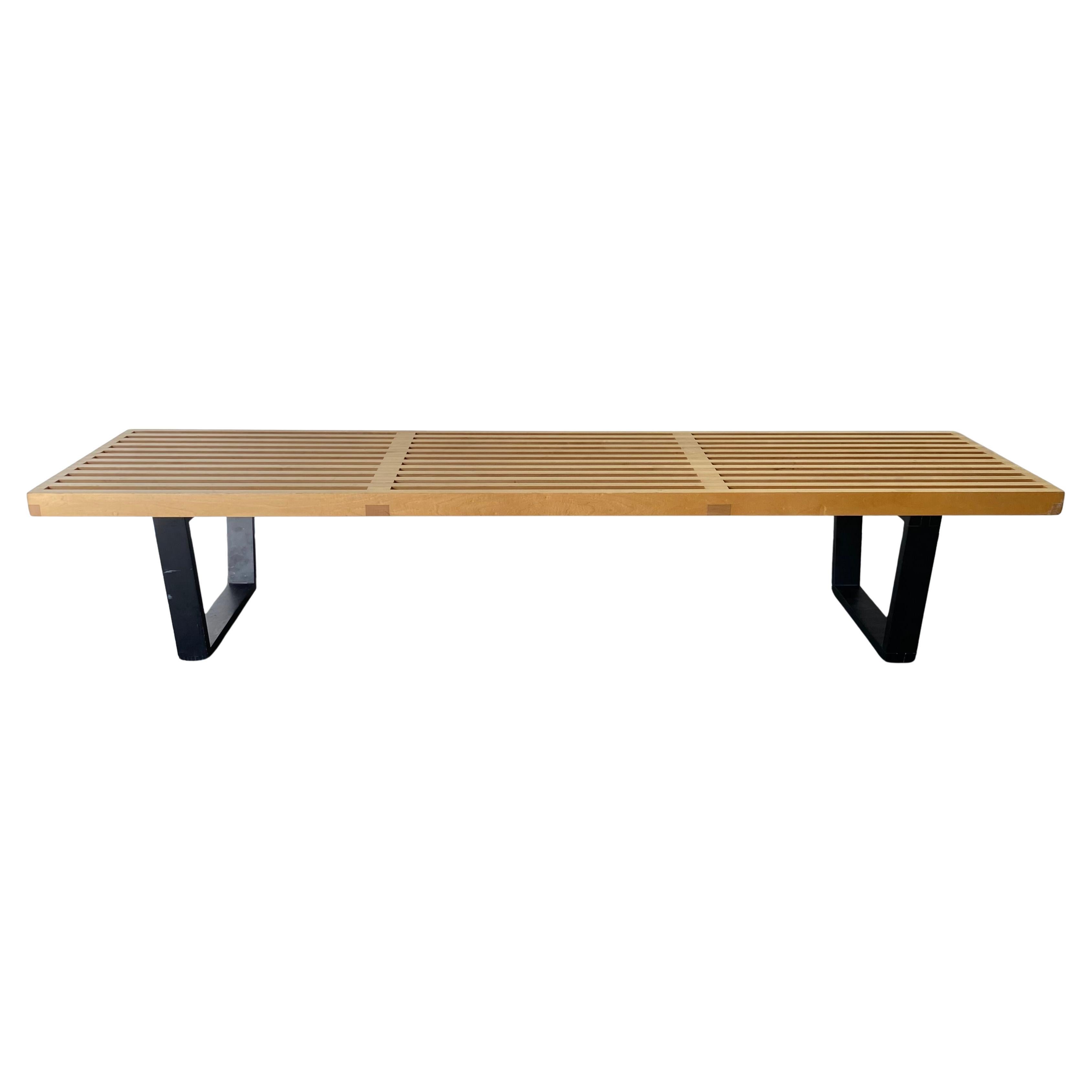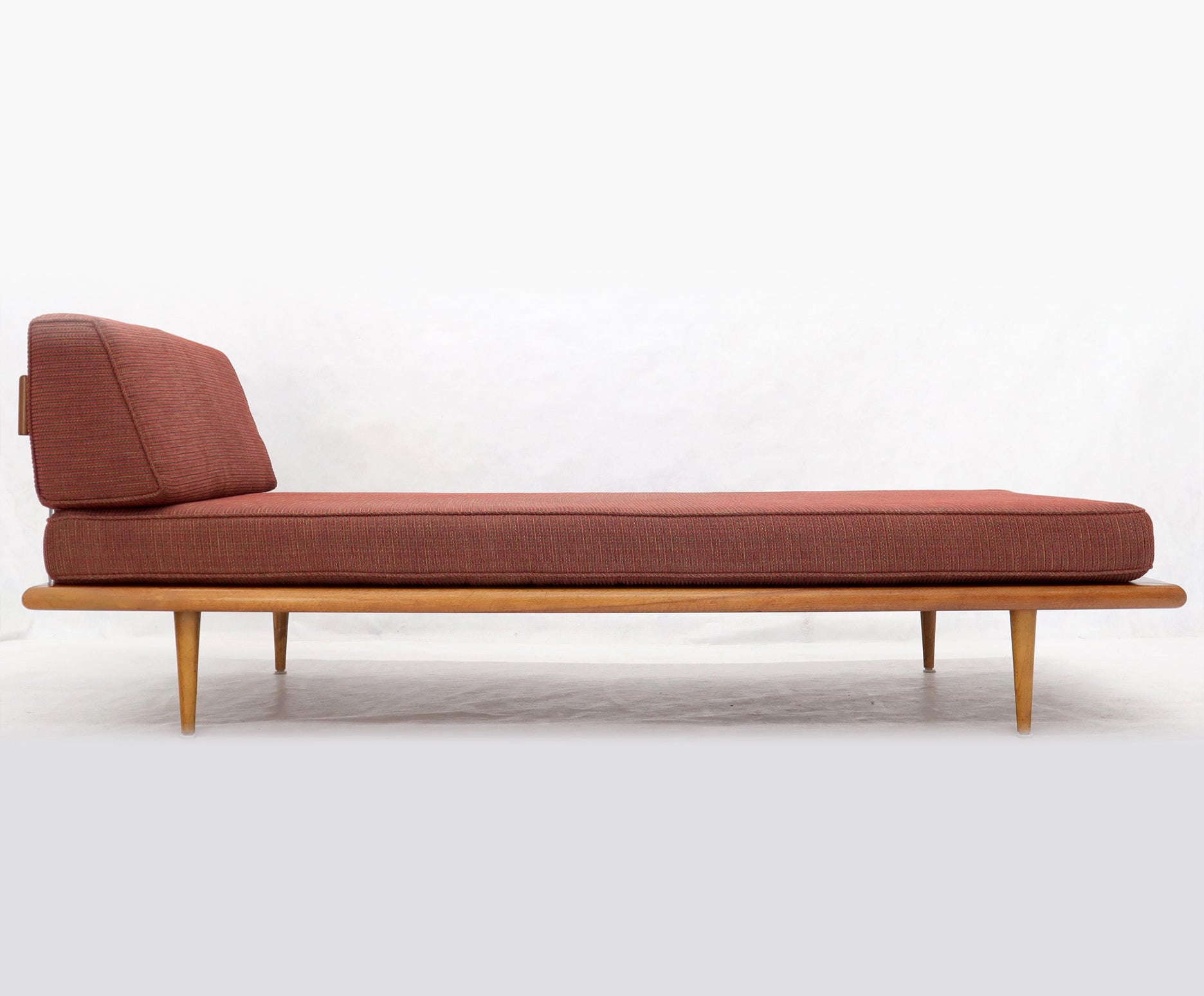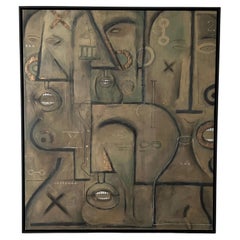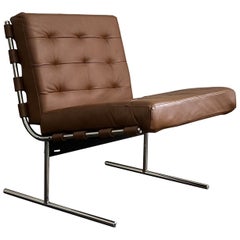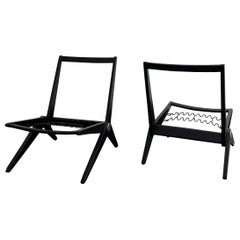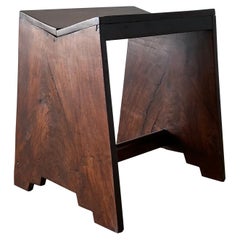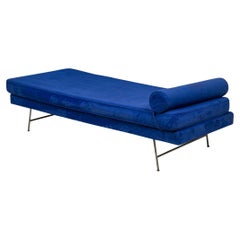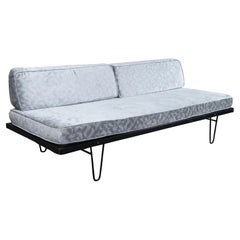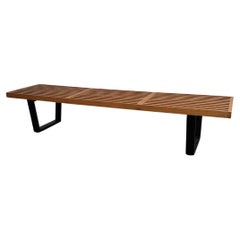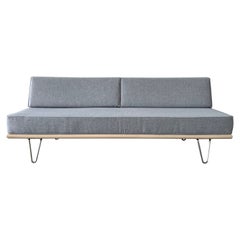
George Nelson Daybed Herman Miller
View Similar Items
George Nelson Daybed Herman Miller
About the Item
- Creator:George Nelson (Designer),Herman Miller (Manufacturer)
- Design:
- Dimensions:Height: 27 in (68.58 cm)Width: 74.25 in (188.6 cm)Depth: 33.75 in (85.73 cm)Seat Height: 16 in (40.64 cm)
- Style:Mid-Century Modern (In the Style Of)
- Materials and Techniques:
- Place of Origin:
- Period:
- Date of Manufacture:2021
- Condition:Wear consistent with age and use. Slight signs of use. Showroom condition.
- Seller Location:Saint Paul, MN
- Reference Number:1stDibs: LU7331230908562
Nelson Daybed
Like many modernists, George Nelson (1908–86) relished design that solved a problem. And there’s probably no more common design problem than not having enough space. A daybed, the Connecticut-born writer, architect and furniture maker reasoned, is “ideal for the bedroom that has to double as a sitting room.” Nelson’s versatile design — particularly with its slim profile and unassuming legs — fits neatly into a compact space, both in its small square footage and its quiet presence.
Nelson conceived an early version of the daybed for use in his own home in 1941. By 1948, he had perfected the design and presented it to Herman Miller, where Nelson had been director of design since 1947. The furniture maker has called his work as a designer “to do much more with much less,” and the final design for his daybed is the culmination of one of Nelson’s trademark efforts to simplify to the greatest degree.
A single, honed wood platform is supported by four graceful legs, either in wood or a more industrial-looking brushed-steel hairpin. Atop this basic frame rests a boxy foam cushion; side bolsters, which are removable for the quick transition from sofa to bed, are optional.
Nelson famously referred to his moments of creative inspiration as “zaps” — though the term appears to imply immediate, fully formed ideas, the daybed proves that sometimes a moment of genius is really the distillation of a long period of perfecting that idea.
The Nelson daybed is still manufactured by Herman Miller today.
George Nelson
Architect, designer, and writer George Nelson was a central figure in the mid-century American modernist design movement; and his thoughts influenced not only the furniture we live with, but also how we live.
Nelson came to design via journalism and literature. Upon receiving his bachelor’s degree in architecture from Yale in 1931, he won the Prix de Rome fellowship, and spent his time in Europe writing magazine articles that helped bring stateside recognition to Ludwig Mies van der Rohe, Gio Ponti, Le Corbusier and other canonical modernist architects.
In the 1940s, Nelson wrote texts that suggested such now-commonplace ideas as open-plan houses, storage walls and family rooms. D.J. De Pree, the owner of the furniture maker Herman Miller, was so impressed by Nelson that in 1944 — following the sudden death of Gilbert Rohde, who had introduced the firm to modern design in the 1930s — he invited Nelson to join the company as its design director. There Nelson’s curatorial design talents came to the fore.
To Herman Miller he brought such eminent creators as Charles and Ray Eames, Isamu Noguchi, and the textile and furniture designer Alexander Girard. Thanks to a clever contract, at the same time as he directed Herman Miller he formed a New York design company, George Nelson & Associates, that sold furniture designs to the Michigan firm. Nelson's studio also sold designs for clocks to the Howard Miller Clock Company, a manufacturer that was initially part of Herman Miller before it became an offshoot that was helmed by Howard Miller, D.J. De Pree's brother-in-law.
Nelson’s New York team of designers (who were rarely individually credited) would create such iconic pieces as the Marshmallow sofa, the Coconut chair, the Ball clock, the Bubble lamp series and the many cabinets and beds that comprise the sleek Thin-Edge line.
For dedicated collectors, as well as for interior designers who look beyond “the look,” there is a “cool factor” inherent to vintage pieces from George Nelson and others. Nelson was in on it from the start, and it’s valuable to have a piece that was there with him.
But still, as is evident from the offerings from dealers on 1stDibs, in any of the designs, in any iteration whose manufacture Nelson oversaw and encouraged, there are shining elements of lightness, elegance, sophistication — and a little bit of swagger. George Nelson felt confident in his ideas about design and didn’t mind letting the world know.
More From This Seller
View AllLate 20th Century North American Tribal Paintings
Acrylic
Mid-20th Century Brazilian Mid-Century Modern Lounge Chairs
Chrome
Mid-20th Century American Mid-Century Modern Lounge Chairs
Maple
Mid-20th Century Indian Mid-Century Modern Stools
Wood
Mid-20th Century European Mid-Century Modern Stools
Chrome
Mid-20th Century European Mid-Century Modern Stools
Chrome
You May Also Like
20th Century American Mid-Century Modern Chaise Longues
Metal, Chrome
Mid-20th Century Mid-Century Modern Sofas
Metal
Vintage 1960s American Mid-Century Modern Benches
Wood
Vintage 1970s American Mid-Century Modern Benches
Birch
Mid-20th Century Mid-Century Modern Armchairs
Upholstery, Walnut
2010s American Mid-Century Modern Sofas
Enamel, Steel
Recently Viewed
View AllRead More
The 21 Most Popular Mid-Century Modern Chairs
You know the designs, now get the stories about how they came to be.
A Guide to Herman Miller’s Most Iconic Furniture
The prolific manufacturer has partnered with many of the world’s top designers since opening its doors in 1923. Here are some of the company’s greatest hits, which helped transform the American home and office.
